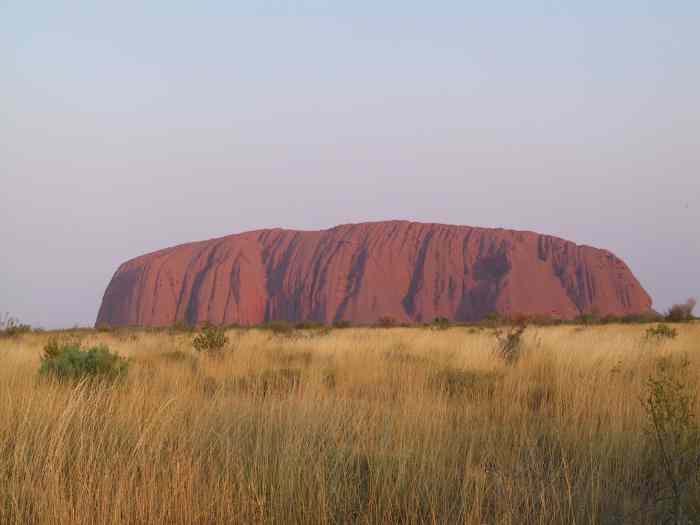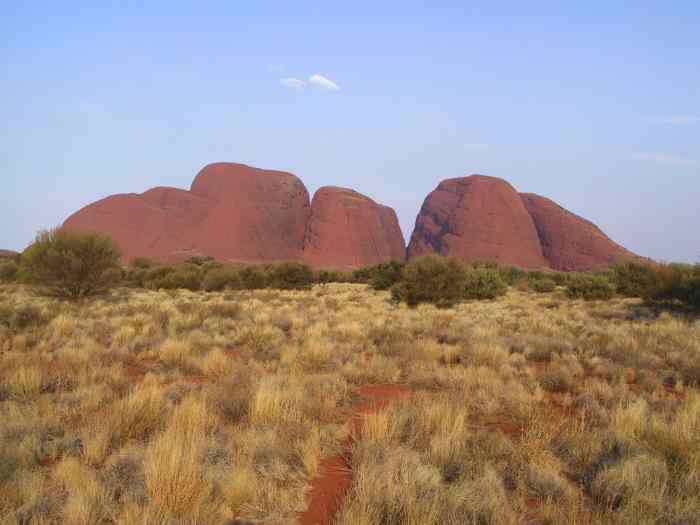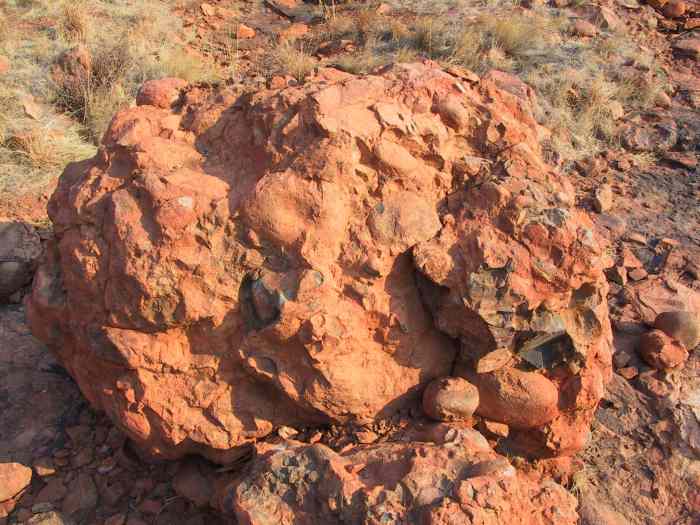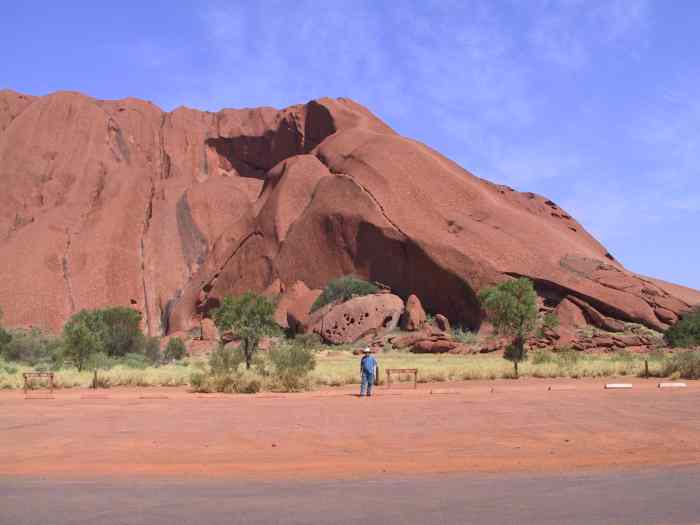
In the morning, we flew from Cairns to Ayers Rock Resort in Australia's "Red Center". Ayers Rock, now called Uluru, is one of the major landmarks in Australia known the world over. It is an immense red rock rising out of the desert and is sure to appear in any collection of photographs of Australia scenery. For many years, the only way to reach Uluru was by road, through the punishing Outback. Then an air landing strip was put in near the rock and tourism took off.
After a while, people realized that having the airstrip so close to the rock was problematic, not the least for the aboriginals of the area who considered Uluru a sacred place. So a new resort was built in the desert, some 15 miles from the rock, in a new town called Yulara. Yulara is a one-company town - all the accommodations and the airport are owned by the Voyages International conglomerate. The accommodations, varying from a campground to apartments to a luxury hotel, are situated within a set of sand dunes so that you can't see anything from a distance - that is, except the huge radio antenna tower that sticks out like a sore thumb! We stayed in the "Desert Gardens" hotel, which was one down in level from the posh "Sails in the Desert". (Well, as posh as things get out there.)
Uluru is in Uluru-Kata Tjuta National Park, which is co-run by local aboriginals and government staffers. What is Kata Tjuta? This is the local name for the rock formation also known as The Olgas. Where Uluru is a single, monolithic rock (the world's largest monolith), Kata Tjuta is "a dramatic series of 36 rock formations above the desert". The legends have the good spirits living at Uluru and the bad spirits living at Kata Tjuta. The two formations are about 10 miles apart.
Our first look at Uluru was via a sunset tour, where one watches while the sunset colors dance and play on the rock. On a good, clear day, this is supposedly quite entertaining, as the color of the rock changes and shadows form and disappear. But the sun set behind clouds when we were there, muting the colors. This is the famous view that you'll see on postcards...

In the past, it has been traditional to climb Uluru - there is a path with a low chain that leads up. The aboriginals "request" that people not climb it, but many still do. However, climbing is prohibited when the daytime temperature is expected to exceed 36C or if it's windy - and it was both when we were there, so the few people on our bus who hoped to do the climb were not able to do so.
Before the sunset viewing, we toured Kata Tjuta, which as rocks go, was actually more interesting.

Unlike Uluru, The Olgas are "aggregate" rocks, made of small to large rocks bound together in a manner called "puddingstone".

Huge rocks like this one are just lying on the ground all over the place at The Olgas! Here's Uluru again, this time with me in the foreground.

© 2002 Steve Lionel - - Home